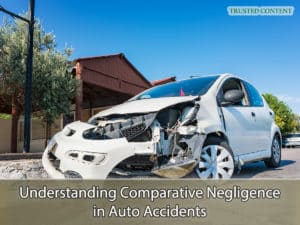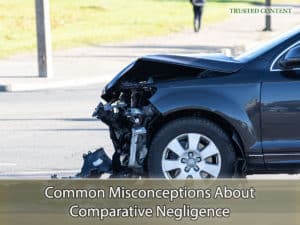In the bustling streets of California, auto accidents are an unfortunate reality that many face. The aftermath of these incidents often leads to complex legal battles, especially when determining the responsibility of each party involved. California's comparative negligence system plays a pivotal role in these determinations, affecting the compensation that injury victims can receive. This guide delves into the nuances of comparative negligence, offering crucial insights for those navigating the aftermath of an auto accident in California. Understanding these principles is essential for securing fair compensation and protecting your rights as an injury victim.

Understanding Comparative Negligence in Auto Accidents
Understanding Comparative Negligence in Auto Accidents
Comparative negligence, also known as shared fault, is a legal doctrine that apportions blame among the parties involved in an accident. In California, this principle allows for compensation to be adjusted based on the degree of fault attributed to each party. If you are found to be partially responsible for the accident, your compensation will be reduced by your percentage of fault. This system ensures that damages are allocated in a manner that reflects each party's contribution to the accident. Grasping the concept of comparative negligence is fundamental for anyone involved in an auto accident claim in California.
The Impact of Comparative Negligence on Your Claim
The application of comparative negligence has a direct impact on the compensation you may receive following an auto accident. In California, the determination of fault is not always clear-cut and involves a detailed analysis of the accident circumstances. Factors such as the actions of each driver, road conditions, and adherence to traffic laws are considered. The final compensation amount is adjusted according to the percentage of fault assigned to you, making it crucial to accurately present your case. Engaging with a knowledgeable legal team can help ensure that your side of the story is effectively communicated and that your compensation is maximized.
Comparative Negligence and Insurance Companies
Insurance companies play a significant role in the comparative negligence process. They often conduct their own investigations to determine fault and seek to minimize their payout by attributing a higher degree of fault to claimants. Understanding their tactics and the importance of countering their findings with solid evidence is crucial. Without effective legal representation, you may find yourself at a disadvantage in negotiations, potentially receiving less compensation than you are entitled to. A lawyer experienced in California auto accident claims can level the playing field, advocating on your behalf to ensure a fair assessment of fault.
Legal Strategies in Comparative Negligence Cases
Navigating a comparative negligence case requires a strategic approach to evidence collection and presentation. This includes gathering eyewitness statements, securing surveillance footage, and obtaining accident reports. Demonstrating the extent of your injuries through medical records and expert testimony is also vital. An adept legal team will construct a compelling argument that accurately portrays your level of fault, if any, and the impact of your injuries on your life. This meticulous preparation is essential for challenging any attempts by opposing parties to unfairly increase your fault percentage.
Why Choose Napolin Accident Injury Lawyer
Selecting the right legal representation can significantly influence the outcome of your auto accident claim. Napolin Accident Injury Lawyer offers a wealth of experience in navigating the complexities of California's comparative negligence laws. Our approach is tailored to each client's unique situation, ensuring personalized and effective legal strategies. With a proven track record of advocating for injury victims, we are dedicated to securing the compensation you deserve while minimizing your stress throughout the legal process.

Common Misconceptions About Comparative Negligence
Common Misconceptions About Comparative Negligence
Many injury victims harbor misconceptions about comparative negligence that can hinder their claims. One common belief is that being partially at fault automatically disqualifies you from receiving compensation. However, California's laws allow for compensation even when you share some of the blame. Another misconception is that fault determination is straightforward and solely based on initial assessments. In reality, it is a complex process that can be influenced by a thorough presentation of evidence. Understanding these aspects of comparative negligence is crucial for anyone involved in an auto accident claim.
How to Protect Your Rights After an Auto Accident
Protecting your rights after an auto accident begins at the scene. Ensure your safety, then document the incident by taking photos, gathering contact information from witnesses, and obtaining a copy of the police report. Seek medical attention immediately, even if you feel fine, as some injuries may not be immediately apparent. Promptly consulting with a lawyer can also safeguard your rights, providing you with guidance on how to navigate the claims process and avoid common pitfalls. Early legal intervention is key to building a strong case under California's comparative negligence laws.
A Guide to Comparative Negligence in California Auto Accidents
A Guide to Comparative Negligence in California Auto Accidents
Navigating the aftermath of an auto accident in California requires an understanding of comparative negligence and its impact on your claim. With the right legal support, you can navigate this complex landscape and secure the compensation you deserve. If you're facing the challenges of an auto accident claim, don't hesitate to reach out to Napolin Accident Injury Lawyer. Call us at (866)-NAPOLIN for a free consultation. Our extensive litigation experience and commitment to our clients make us a trusted ally in protecting your rights and securing fair compensation.
- Understanding Uber Accidents and Insurance Coverage Periods in California - April 8, 2025
- A Guide on Red Light Auto Accidents in California - August 14, 2024
- Self-Representing in a California Personal Injury Claim - August 13, 2024
